2019 DeFi industry research report: DeFi industry will become the best application scenario for blockchain landing in vertical industry
Source: DappTotal
Editor's Note: The original title was "DeFi Industry Research Report 2019"
If 2018 is the beginning of DeFi, then the past 2019 can be called the first year of DeFi. This year, thousands of sails were launched in the DeFi field, and flowers blossomed. DeFi has evolved from the flames of the stars to an emerging field where the entire blockchain industry is paying attention and giving great development imagination. Everyone has reached a consensus: the development of the digital asset market in the first decade relied on exchanges, and the development of the next ten years relied on DeFi.
In June 2019, DAppTotal produced the “DeFi Industry Research Report for the First Half of 2019”, and focused on the three major markets of DeFi: stable currency, lending market, and decentralized exchange.
- Ethereum 2.0 development team AMA: Phase 0 will be deployed as early as 3 months
- Court dismisses United American lawsuit against Bitmain
- Monthly Report | Global Blockchain Private Equity Financing Declined 80% in January, Sino-US Market Cooled Down
At the beginning of 2020, we will continue to conduct a longitudinal analysis around the DeFi troika, and focus on the performance of the industry's head application MakerDAO over the past year as the key data analysis research object, and take everyone to understand the development status of the DeFi industry in the past year and future DeFi. New trends that may evolve.
- Stablecoin market: According to DAppTotal data, as of December 31, the total issuance of stablecoins was 5.827 billion, compared with 2.702 billion at the end of 2018, with a total of 3.124 billion more issued. Of the total stablecoin market share, the USDT issuance volume was USD 4.76 billion, accounting for 81.7%, and the total amount of emerging stablecoin market is USD 1.067 billion, accounting for 18.3%.
On the whole, the stablecoin market has achieved rapid growth in 2019, with a total of 2.857 billion USDT issued across the entire network, an increase of 150% over 2018. It is worth mentioning that in the past year, USDT has basically completed the transfer from the OMNI network to the ERC-20 network. As of now, ERC20-USDT has not only surpassed OMNI-USDT in its circulation, but also has a large daily transaction volume and frequency. Beyond.
- Lending market: According to DAppTotal data, as of December 31, the overall value of the lock-up of the DeFi project was $ 874 million, of which the value of MakerDAO's lock-up was $ 3.1 billion, accounting for 35.35%, and the value of EOSREX's lock-up was $ 195 million Accounted for 22.33%, the value of Edgeware hedging is US $ 100 million, accounting for 11.50%, Compound, Synthetix, dYdX, Nuo and other DeFi applications accounted for a total of 30.82%.
Overall, in 2019, the DeFi lending market also achieved rapid development: the ETH lock-up volume of the industry leader MakerDAO increased from 1.87 million at the beginning of the year to 2.35 million at the end of the year, an increase of 25.66%, further consolidating the industry Status; Compound locked positions were US $ 84.18 million, an increase of 476.97% compared to US $ 14.59 million at the beginning of the year. DAI deserves to be the king of circulation in the DeFi lending market, while USDC has become the fastest growing emerging stable and stable currency in the emerging stablecoin market.
- DEX market: According to DAppTotal data, as of December 31, the cumulative transaction value of the DEX market in 2019 reached US $ 2.026 billion, of which, the total transaction volume in January was US $ 77.63 million, which increased to US $ 119 million in December, an increase of 54.25% .
Overall, in the past year, the overall market for decentralized exchanges (DEX) has been relatively stable. DEX has launched exploration attempts in multiple use scenarios such as small currency launches and DeFi wealth management, but compared to centralized exchanges, Its market liquidity needs to be improved.
1 Introduction
Decentralized Finance, or DeFi for short, is also called open finance. Currently, it is mainly active in the Ethereum network ecosystem. After two or three years of exploration and development, stable financial currencies, lending platforms, derivatives, forecast markets, insurance, and payment platforms have been developed.
In theory, DeFi can be said to move traditional finance to the blockchain network 1: 1. However, due to the relatively early development of the industry, DeFi applications are mainly based on troikas, stablecoins, decentralized exchanges, and lending markets. Development area. Below we will carry out detailed data analysis and discussion around these three major parts.
In 2019, DeFi is the mainstay of the blockchain industry, giving the blockchain industry greater market vitality and imagination. As shown in Figure 1, the total value of DeFi's hedging industry has increased significantly from the beginning of the year, soaring from US $ 302 million on January 01, 2019 to US $ 931 million on December 31, 2019, an increase of nearly three times. Among them, when the market was better in the middle of the year, the maximum value of the lockup had reached 1.75 billion US dollars.

Figure 1. Total value of hedging of DeFi applications in 2019
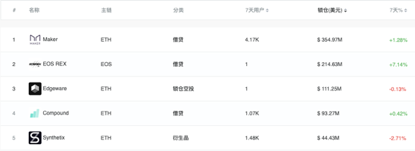
Figure 2. Top DeFi application leaderboards (DAppTotal.com)
According to DAppTotal.com [1] data, as of December 31, 2019, the top 5 DeFi applications are: Maker [2], EOSREX [3], Edgeware [4], Compound [5], Synthetix [6] .
1.2 Methodology
The data mentioned in the report comes from public data on the blockchain. The data analysis part is the result of long-term research by the DAppTotal team. Over the past year or so, the DAppTotal team has accumulated a large amount of on-chain data information such as transactions and logs on the head public chain, built a rich and comprehensive database, and developed professional data analysis tools.
This report is based on DAppTotal's own blockchain database and analysis software, and systematically and prospectively analyzes and discusses the new DeFi industry trends and development expectations for the readers.
1.3 Disclaimer
The content of this report is based on our research results and understanding of the blockchain and DeFi industry. However, due to the anonymity of the blockchain, we cannot guarantee the accuracy of all data here, and DAppTotal cannot make mistakes or omissions in it. Or take responsibility for losses caused by using this report.
At the same time, DAppTotal is not an investment advisor, broker, or trader, and we do not have non-public information in this research area. Therefore, this report should not be used as a basis for investment advice or credit analysis.
2.2019 DeFi Industry Status
Before 2019, DeFi is a very niche frontier, and there are only very few DeFi platforms such as MakerDAO and Compound in the industry. Since 2019, the DeFi field has shown a flourishing situation. Based on the open and transparent nature of blockchain technology, the DeFi industry has extended a variety of applications such as payment, stable currency, lending, decentralized exchanges, and derivatives.
DeFi has appeared on the Ethereum network with high-profile applications such as MakerDAO, Compound, and the EOSREX platform on the EOS network.In addition, many emerging public chains, such as Cosmos, Polkadot, and Nervos, have also stated that future ecological construction may be applied on DeFi. The key layout of the field has given DeFi great imagination.
On the whole, in the past 2019, the DeFi industry has completed a series of market-based development such as basic model exploration, product testing, and user cultivation. Manifested as:
1. The expansion of multiple usage scenarios. Due to the overall volatility of the digital asset market, miners have become the first users to use the DeFi platform initially. Miners need a larger cash flow to support mining, so mortgage digital assets to the lending platform in exchange for stability Coins come out as a good choice. In addition, with the introduction of deposit rates by platforms such as Maker and Compound, the demand for DeFi wealth management has gradually been tapped.
2. The multi-product combination model . Due to the open and transparent nature of blockchain technology, DeFi products have strong composability characteristics. For example, DAI borrowed from Maker can be stored in Compound and then loaned for trading on dYdX. Compared to the user data island characteristics of traditional financial fields, DeFi products can derive new models through product portfolios to provide users with a more integrated product and service experience.
3. Multi-mortgage asset trend . In order to hedge against the pressure of single digital asset mortgage volatility on the stability of the lending market, MakerDAO launched multi-collateral DAI (MCD) in late November. The first batch of digital assets supporting BAT was added to the mortgage portfolio. Maker launches multi-collateral DAI to hedge the impact of single ETH asset fluctuations on platform stability. As more and more digital assets join the ranks of mortgages, it will drive the DeFi lending platform to gradually stabilize.
Of course, despite the possibility of trying multiple product innovations, the DeFi market as a whole still has a relatively small number of users. This makes the DeFi market still a long way from popularization and popularization, and still needs to face larger market challenges.
3. DeFi-stablecoin
Stablecoin is a digital asset born against digital asset volatility. At present, the mainstream stablecoins in the market are anchored by the anchor method. For example, USDT issued by Tether Company is pegged to the U.S. dollar. There is also an anchored digital asset that maintains stable and stable currencies such as DAI by dynamic algorithms.
Everyone is familiar with USDT. Since it was issued on the Bitcoin network in 2014, it has been firmly in the top spot of the stablecoin market. According to DAppTotal data, as of December 31, the stablecoin market has issued a total of 5.827 billion U.S. dollars, of which the total amount of USDT issued on the entire network is 4.76 billion U.S. dollars, accounting for 81.7% of the overall market share, of which OMNI-USDT issuance is 1.54 billion The circulation of ERC20-USDT is USD 2.3 billion, and the circulation of TRON-USDT TRON network is USD 916 million.
On the whole, in 2019, a total of 2.857 billion USDTs were issued across the entire USDT network, an increase of 150% over 2018's stablecoins. The main reason for the large issuance of USDT is the increase in demand caused by rising market prices.
According to DAppTotal data, the total number of emerging stablecoin market is 1.067 billion, of which USDC is 522 million, accounting for 48.8%, ranking first. PAX issuance is US $ 223 million, accounting for 21%. TUSD ranked second and TUSD ranked third, with a circulation of USD 154 million, accounting for 14.4%. Other emerging stable currencies including DAI, GUSD, EURS, nUSD, etc. accounted for 15.8%.
In the past year, as the market has been questioning the USDT centralization problem, this has given greater market opportunities to other emerging stable currencies.
According to DAppTotal data, the total issuance of the emerging stablecoin market was 1.067 billion, of which USDC issued 257 million in 2019, an increase of 98% over 2018, and DAI issued an additional 19 million in 2019, an increase of 29 from 2018. %.
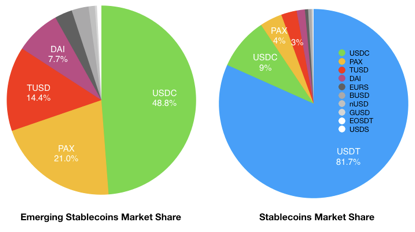
Figure 3 Market share of the stablecoin market in 2019
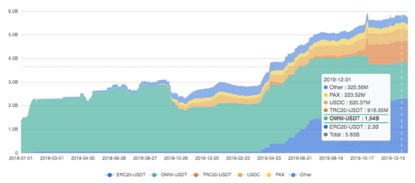
Figure 4 Historical Issuance of the Stablecoin Market
Since April 2019, Tether has accelerated the issuance of USDT on the Ethereum network. As of now, the total number of ERC20-USDT issuances is 2.3 billion, accounting for 48.31% of the total USDT issuance, and OMNI- The USDT circulation was reduced to 1.54 billion, and USDT officially completed the migration from the OMNI network to the ERC20 network. Not only the circulation, the Ethereum network has won. As shown in the figure below, ERC20-USDT daily transaction times and daily transaction data show that the market circulation of USDT in the ERC20 network has already surpassed the OMNI network to become the market demand subject.
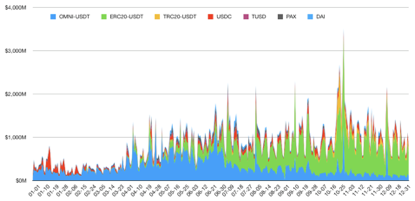
Figure 5 Number of transactions in stablecoin days in 2019

Figure 6 Daily transaction volume of stablecoins in 2019
Figures 5 and 6 show the daily on-chain transactions and total transaction value of stablecoins in 2019
Moreover, it is worth mentioning that USDT is currently issued on Bitcoin, Ethereum, and the TRON network. In addition, USDT is also issued on the EOS network, and even CNHT anchored in RMB.
3.1 Development Status of Stablecoin Market
In general, the market demand and liquidity of stablecoins are steadily increasing throughout the year. The daily transaction value on the chain increased from US $ 139 million on January 01 to US $ 798 million on December 31, an increase of nearly five times. The number of daily transactions on the chain also increased from 13,000 on January 01 to 94,000 on December 31, an increase of over 6 times. It can be seen from the data that the market circulation of USDT will change hands every 7 days. In addition, it should also be noted that USDC, DAI, etc. have also become emerging forces that cannot be ignored in the stablecoin market, occupying a considerable proportion in the overall market transactions.
4. DeFi-Borrowing
The main application scenario of DeFi lending is similar to the deposit and loan behavior in the traditional financial field. Users mortgage digital assets to lend stable or fiat currencies. In a bear market, this will meet the needs of a large number of users to store coins and attract users to mortgage loans.
Generally, if the demand for lending in the lending market is greater than the demand for deposits, it will attract more people to mortgage digital assets, and the platform will also generate more profits and operate healthier.
However, the DeFi lending market is still in its early stages. Mortgage demand is significantly greater than lending demand. This can allow the DeFi platform to obtain a more stable and secure operating environment, and not cause a large number of liquidations or simultaneous runs due to the sharp decline in the market.

Figure 7 Lending market share in 2019
DAppTotal has carried out multi-dimensional data analysis on the following five lending platforms: Maker, Compound V1, Compound V2, dYdX, Nuo, Lendf.Me.
These platforms all run on Ethereum. The earliest establishment of Maker is also an industry leader. We will focus on the elaboration in the next six chapters. Compound has undergone a major upgrade in the middle of the year. We will separately describe the two parts V1 and V2. .
4.1 Borrowing and Lending of Digital Assets
As shown in Figures 8 and 9, as of December 31, 2019, DeFi's lending assets since 2019 totaled $ 931 million, of which DAI accounted for 73.3%, SAI accounted for 8.3%, ETH accounted for 11.1%, and USDC accounted for Borrowed assets totaled US $ 2.4 billion, of which ETH accounted for 53%, DAI + SAI accounted for 40%, and USDC accounted for 7%.

Figure 8 Monthly Debits of 2019 DeFi Loan Projects
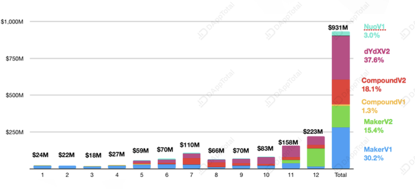
Figure 9 Monthly Debits of DeFi Loan Projects in 2019
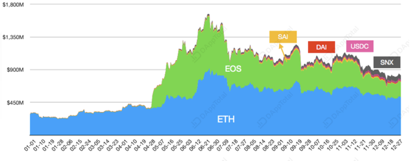
Figure 10 Mortgage assets of the 2019 DeFi loan project
4.2 Distribution of outstanding assets
As shown in Figure 10, since 2019, the mainstream lending platforms have total outstanding digital assets of USD 134 million, of which DAI includes USD 71 million, accounting for 53%, SAI includes USD 41 million, accounting for 31%, and USDC has 2,000 Million US dollars, accounting for 5%.

Figure 11 Distribution of outstanding assets of DeFi lending platform in 2019
Due to the large fluctuations in the overall digital currency market, in order to maintain the healthy operation of the platform, the lending platforms have formulated a high asset mortgage rate. As shown in Figure 11, Maker, Compound, dYdX and other lending platforms have asset mortgages in the past year. The average rate remains above 200%, and the current average is 345%, which is relatively healthy.

Figure 12 Mortgage rate of 2019 DeFi lending platform
4.3 Interest rate fluctuations on lending platforms
The adjustment of the borrowing rate of the lending platform is a conventional governance measure to stimulate market supply and demand and adjust the price of the DAI stablecoin. As shown in Figure 13, since 2019, Maker's borrowing interest rate has experienced a continuous upward adjustment and subsequent downward adjustments. Since Maker acts as a near- "central bank" in the DeFi lending platform, affected by Maker's interest rate, interest rates on platforms such as Compound and dYdX have also continued to change.

Figure 13 Asset Debit Rate of 2019 DeFi Lending Platform
4.4 Accumulated Users in DeFi Lending Market
As shown in Figures 14 and 15, the user growth in the DeFi market has increased from thousands to nearly 180,000 at the end of the year. Among them, Maker is the most active platform for DeFi users, accounting for 81% of users. It is worth mentioning that, as shown in Figure 15, platform users such as Maker, Compound, dYdX, and synthetix have a strong degree of overlap.

Figure 14: Cumulative users in the DeFi market in 2019
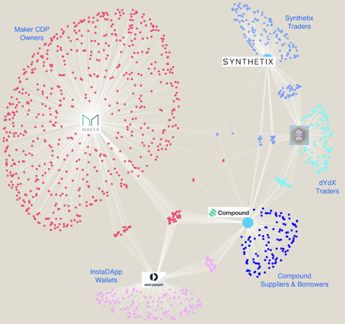
Figure 15 DeFi market user overlap in 2019
4.5 DeFi Lending Market Status
On the whole, although the DeFi lending market is still in its early stages, it has already shown a more fierce competition format. According to DAppTotal data, in the past year, the total amount of DeFi loans increased from US $ 24 million in January to US $ 223 million in December, and total mortgage assets also increased from US $ 59 million in January to US $ 463 million in December. In addition, the current mortgage rate of mainstream lending platforms is generally around 345%, and the system is relatively safe. Although DeFi users have grown from early thousands to hundreds of thousands, they are still relatively small.
5. DeFi-Decentralized Exchange
Decentralized exchanges (DEX) have always been an important part of the digital asset market. It should have played the role of a centralized exchange, but due to transaction efficiency and user scale, it has always been a niche attitude in the industry. In.
However, due to the completely decentralized, transparent, and open characteristics of DEX, especially popular with some geek users, many small project developers use DEX as the currency's first online platform, and some hackers also use DEX as a key money laundering channel. .
There is no centralized permission control, there are not too many KYC channel restrictions, there is no hidden price manipulation and transaction volume fraud, all transaction records are on the chain, and DEX is highly anticipated by everyone due to its native blockchain native characteristics. And attention is also regarded as the ultimate form of future digital asset exchanges.
In this chapter, we will show the data and analysis of 17 decentralized exchanges based on the Ethereum network: Eth2dai, IDEX, Kyber, Uniswap, ForkDelta, DDEX, The Token Store, AirSwap, Radar Relay, Paradex, Bancor, Tokenlon, Star Bit, LedgerDex, Bamboo Relay, The Ocean and TokenJar.
5.1 DEX market share and transaction data
Looking back at the data of the decentralized exchanges over the past year, the overall active user and market transaction volume has been steadily rising slightly, but it has shown a trend of cyclical and unstable fluctuations. For the whole of 2019, Eth2dai has the highest transaction value in DEX, accounting for 25% of the market share; IDEX and Uniswap, ranking second, each occupying 20% of the market share; Kyber, ranking third, has 12% of the market share, Cumulative transaction value for the year was USD 2.026 billion.
The chart below shows the market share of each DEX in 2019.
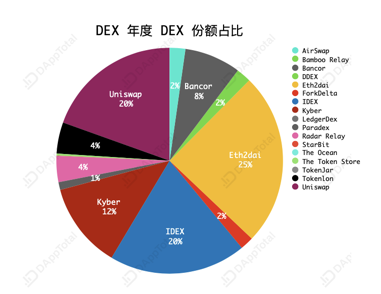
Figure 16 Market Share of Decentralized Exchanges in 2019

Figure 17 Monthly transactions of decentralized exchanges in 2019

Figure 18 Monthly transactions of decentralized exchanges in 2019
Figure 17 shows the monthly transaction amount of DEX, Figure 18 shows the number of monthly transactions, and Figure 19 shows the monthly active users.
5.2 DEX Market Status
According to DAppTotal data, the total DEX monthly transaction volume in 2019 has maintained a steady growth overall, which was $ 77.63 million in January and $ 119 million in December. The two fastest-growing DEX platforms are: Kyber and Uniswap. It is worth mentioning that in August, Tokenlon's active users grew rapidly, with monthly active transaction addresses reaching 10,113.
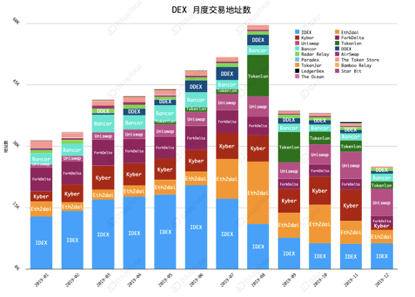
Figure 19 Monthly transaction addresses (MAU) of decentralized exchanges in 2019
6. MakerDAO Data Annual Report
In this chapter, we focus on the data overview of the current industry leader MakerDAO. Through the development of MakerDAO in the past year, we can roughly observe the development status of the DeFi industry in the past year.
6.1 MakerDAO basic data overview
MakerDAO is the earliest DeFi platform in the field of blockchain. Founded at the end of 2017, it has issued a decentralized stable currency DAI that is adjusted by algorithms, and anchors the US dollar 1: 1.
According to DAppTotal data, as of December 31:
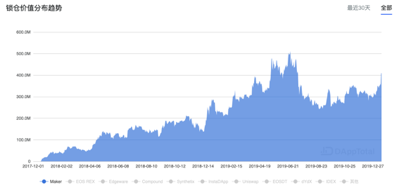
Figure 20 Maker lockup value growth

Figure 21 The amount of ETH and BAT assets locked by Maker
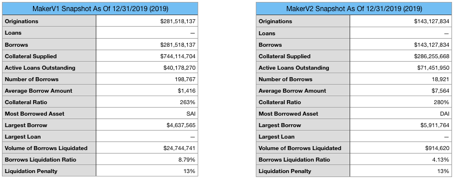
Figure 22 Overview of Maker V1 and V2 basic data
6.2 Overview of MakerDAO's one-year development process
Since 2019, the value of MakerDAO hedging positions has increased from US $ 262 million at the beginning of the year to US $ 308 million at the end of the year, and has achieved a steady development trend. At the same time, the entire DeFi industry has also been liberated from the oligopoly of MakerDAO, showing a diversified and extended development, and a series of innovative financial-based products such as Compound, dYdX, Uniswap, and Synthetix have appeared.
Moreover, with the continuous enrichment of market competition formats, similar to the interaction between "central bank" and "commercial bank", marketization and mutual circulation began to occur between multiple platforms such as Maker, Compound, and dYdX.
The DAI generated after the Maker platform is mortgaged into ETH will flow into platforms such as Compound and dYdX under the independent regulation of the market, especially when the deposit interest rates introduced by platforms such as Compound are greater than Maker's borrowing rate.
Since March last year, during the upward movement of market conditions, Maker has carried out more than a dozen interest rate increases, up to 20.5%, which has provided greater development opportunities for platforms such as Compound. Many users use the DeFi platform The difference in interest rates is carried on the wool.
In order to further increase the user activity of the platform, MakerDAO and Coinbase in August conducted a relatively successful interactive marketing. In just one week, the scale of MakerDAO users has climbed linearly.
However, this cannot counter the rapid development of platforms such as Compound. After August, Maker began to lower the borrowing rate and activate user activity by attracting more people to deposit and borrow. However, because the digital asset market is too volatile, a large plunge in the market may cause a large number of loan orders to be liquidated.
According to DAppTotal data, on September 25th alone, a total of $ 6.32 million of orders were cleared on the MakerDAO platform, which had a greater impact on the stability of the platform.
In order to reduce the impact of frequent currency price fluctuations on the system, MakerDAO launched a multi-mortgage DAI system in November. By introducing a variety of digital assets such as BAT, it reduces the volatility caused by a single ETH mortgage to the market. In addition, MakerDAO also launched the Deposit Interest Rate (DSR) and Oasis Trade decentralized trading platform.
Since the launch of MCD one month ago, the transfer process from SAI to DAI has also been relatively smooth. As of now, the total market supply of DAI is 110 million, and the supply of SAI is 23.8 million. The process of SAI's upgrade to DAI has been basically completed.
7. Conclusion
In this report, we analyze the current status of the development of the DeFi industry troika: stablecoins, lending markets, and decentralized exchanges.
- Stablecoin market: In 2019, the total issuance of the stablecoin market was US $ 5.827 billion, of which the total issuance of USDT was US $ 4.76 billion, accounting for 81.7%, distributed on the Ethereum, OMNI, EOS and other networks. The amount of newly issued stablecoins was 10.67 billion US dollars, accounting for 18.3%. In the past year, USDT has basically completed the transfer from the OMNI network to the ERC-20 network, and the amount of USDT newly issued in 2019 was 2.857 billion, an increase of 1.5 times compared to 2018.
- Borrowing market: In 2019, as of December 31, the overall value of the DeFi project hedging was US $ 891 million, of which the value of MakerDAO's hedging was US $ 310 million, accounting for 35%, and the value of EOS hedging was US $ 200 million, accounting for 22.55% , Edgeware lock-up value is 105 million US dollars, accounting for 11.88%, Compound, Synthetix, dYdX, Nuo and other DeFi applications accounted for 29.77%. Over the past year, the lending platform has accumulated a total of $ 931 million in loans and a total of $ 2.4 billion in loans.
- DEX market: In 2019, the overall transaction volume of the decentralized exchange (DEX) was US $ 2.026 billion . Over the past year, the total monthly transaction volume of DEX has maintained a steady growth, from USD 77.63 million in January to USD 119 million in December.
Overall, in the past year, the DeFi industry has achieved rapid development, and a multi-product portfolio model, a multi-asset mortgage trend, and a multi-scenario application trend have emerged.
In 2020, blockchain technology is leading a new round of technological change and industrial change worldwide. Heads of countries also met to discuss how to monitor and manage virtual assets and virtual asset service providers (VASPs), which means that the DeFi industry will be included in the regulation and anti-money laundering compliance will be further strengthened.
At the same time, as the DeFi market continues to grow, the DeFi field will also become the hardest hit area for hackers due to the relatively close distance to digital assets, which also brings new challenges to the security and healthy development of the DeFi industry.
In short, opportunities and challenges coexist, and various new models such as DeFi wealth management and DeFi derivatives will become new growth-driven engines, and the DeFi industry will also become the best application scenario for the blockchain to land in vertical industries.
references
[1] DAppTotal The world's leading DApp data service platform, https://dapptotal.com/
[2] MakerDAO official website, https://makerdao.com/en/
[3] Official website of EOS REX https://eosauthority.com/rex
[4] Official Edgeware website, https://edgewa.re/
[5] Official Website of Compound, https://compound.finance/
[6] Official Synthetix website, https://www.synthetix.io
We will continue to update Blocking; if you have any questions or suggestions, please contact us!
Was this article helpful?
93 out of 132 found this helpful
Related articles
- Former European Central Bank Deputy Governor: Consumer-oriented central bank digital currency will wait another 10 years
- Ripple partners with Nasdaq-listed company to support US-Mexico cross-border payments
- Both challenges and opportunities, this team hopes to run Ethereum 2.0 testnet with mobile phones
- OMFIF / MORI survey: The most trusted digital currency issuer is indeed TA!
- Beijing introduced "16" measures to promote the development of small, medium and micro enterprises, including the construction of a blockchain-based supply chain debt and debt platform
- Beijing: To cope with the impact of the epidemic, build a blockchain-based supply chain debt and debt platform
- Researcher's viewpoint at Renmin University of China: New currency ECO in West Africa and Central African countries may move towards digital currency






